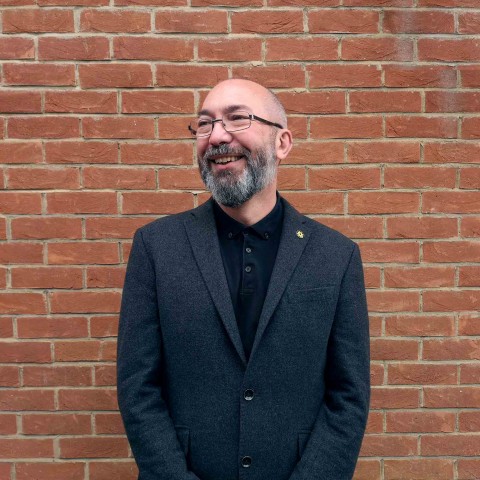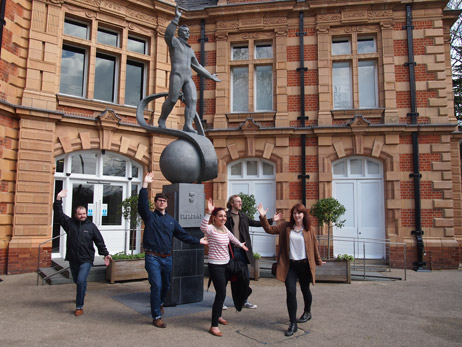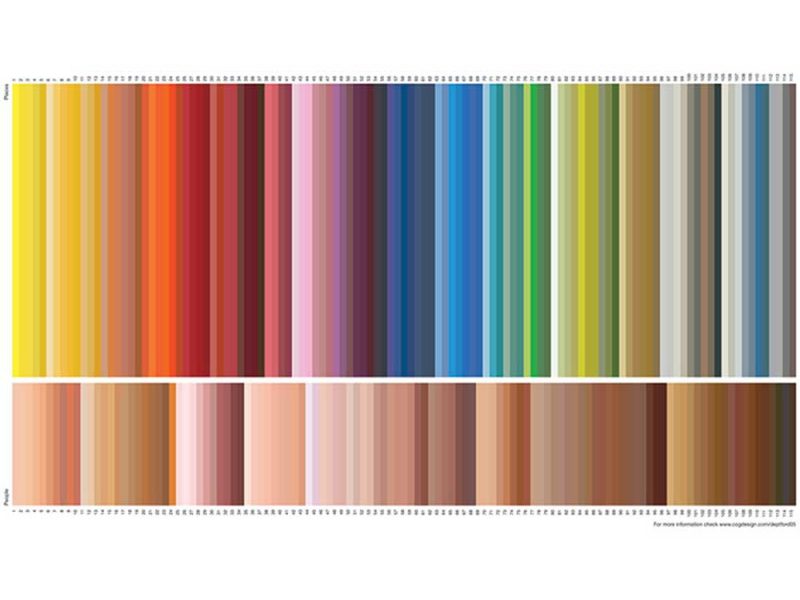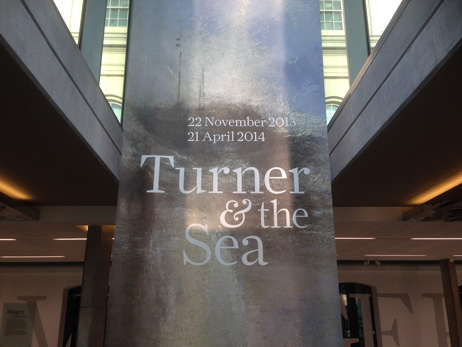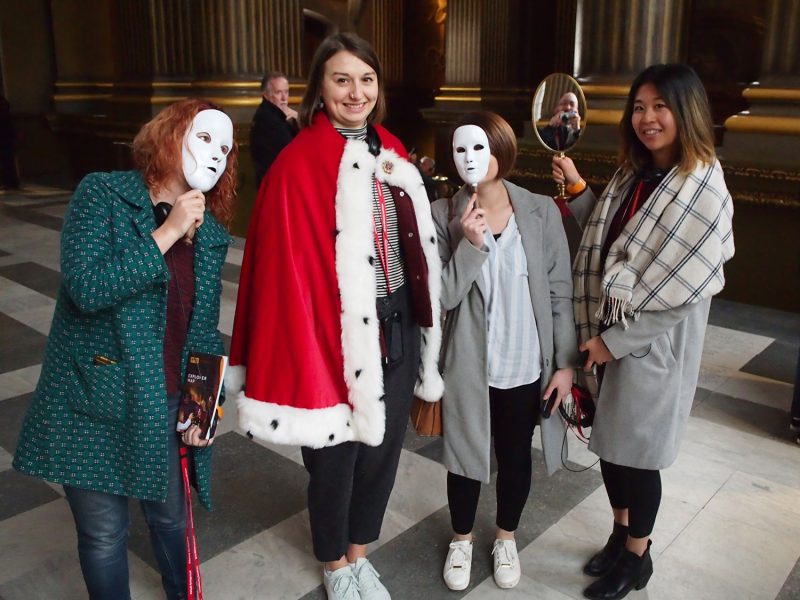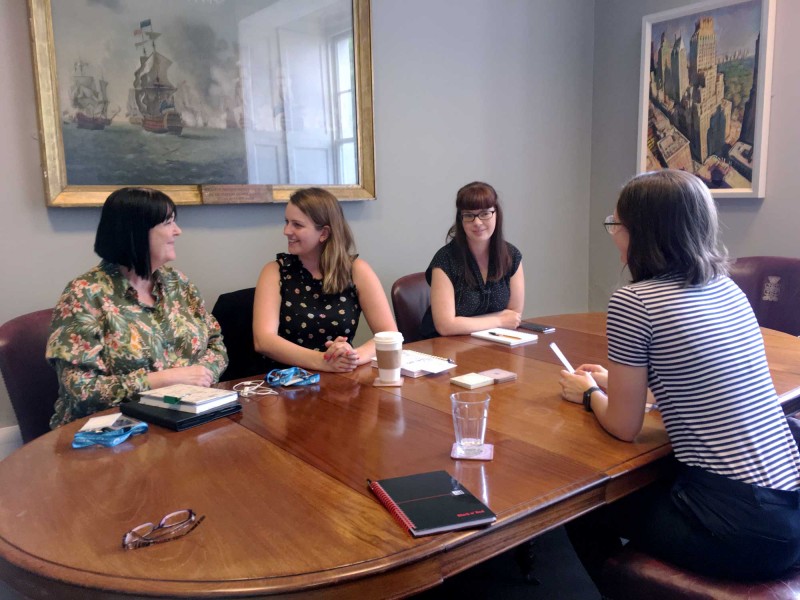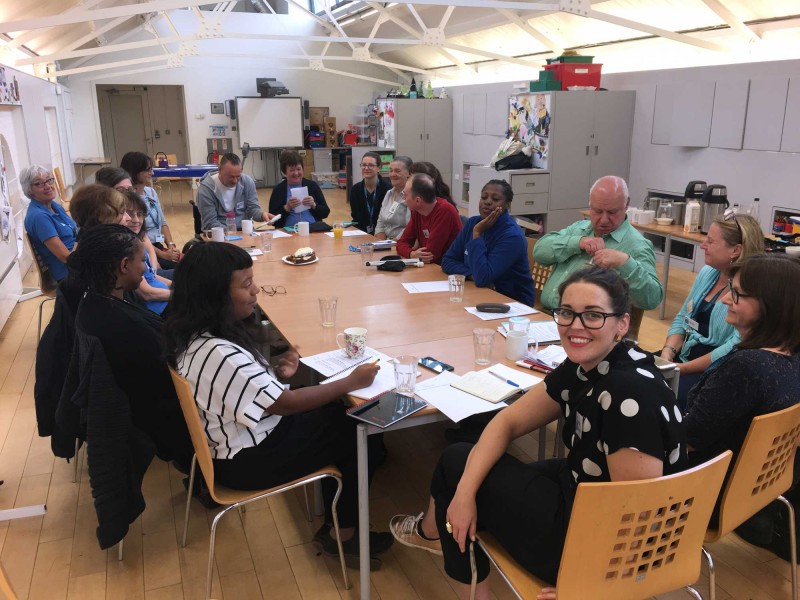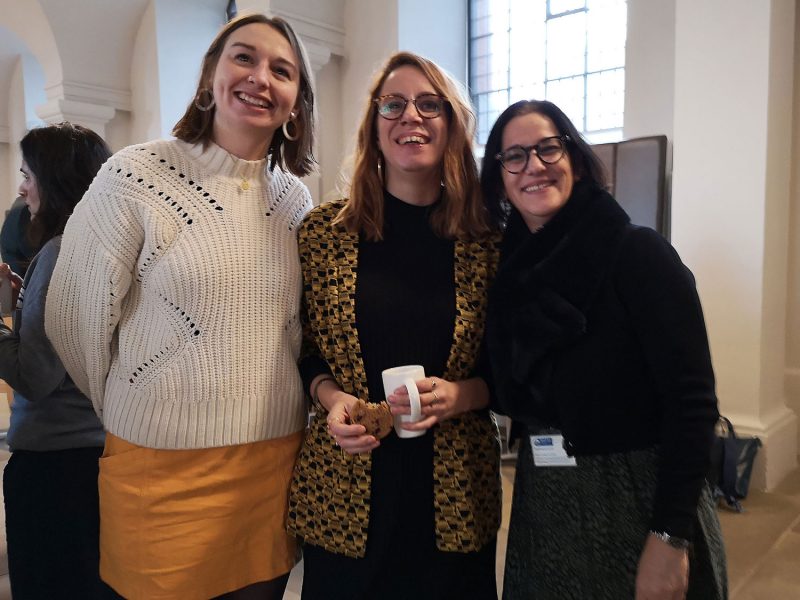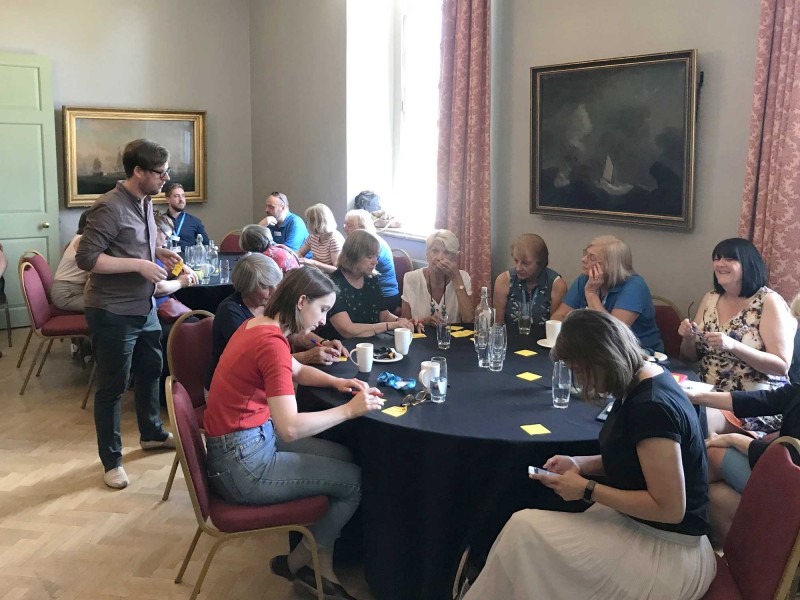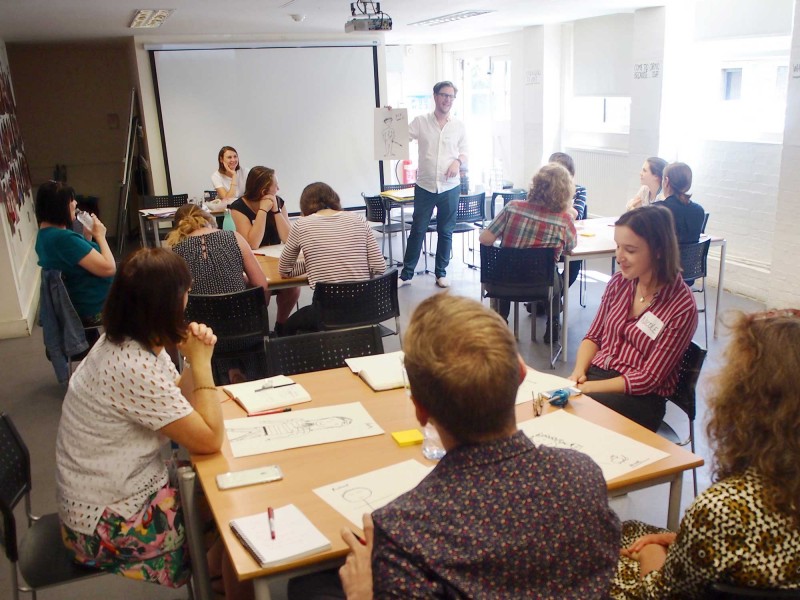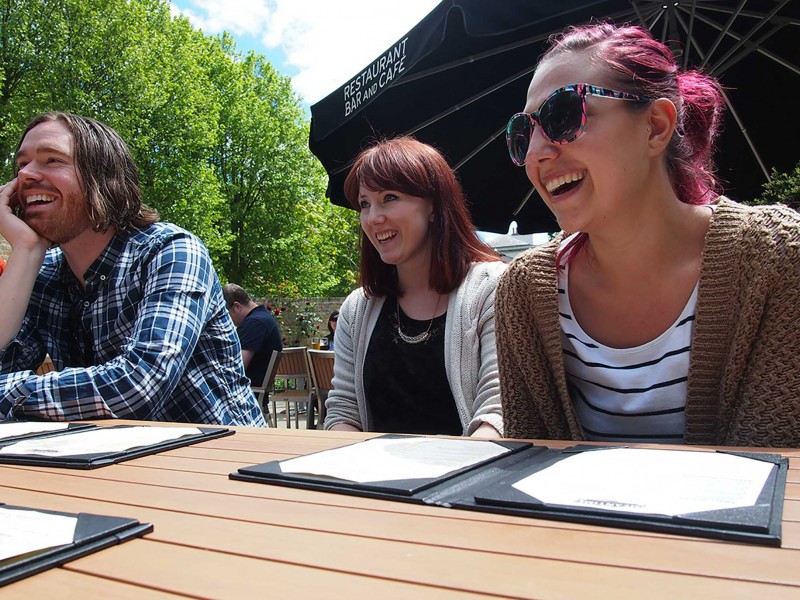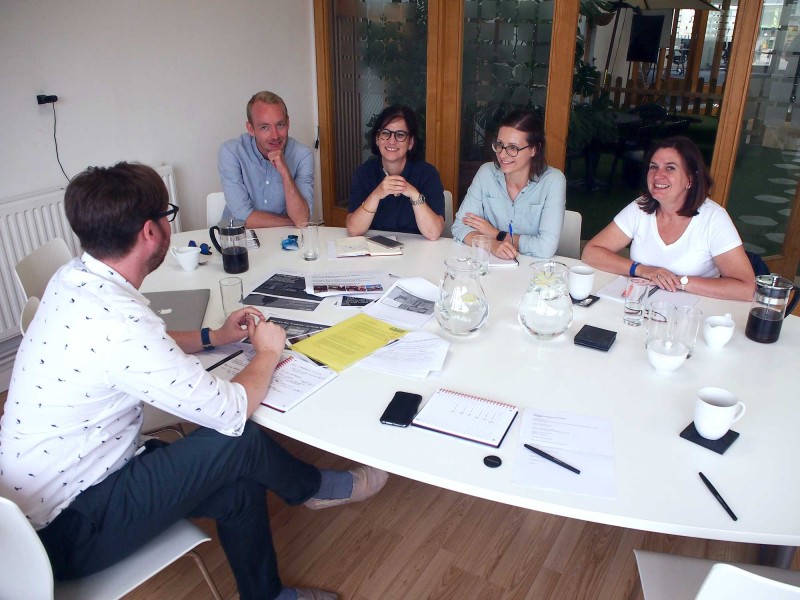We were lucky enough to be invited to an advanced opening of the restored Painted Hall, at the Old Royal Naval College in Greenwich. Michael gives some thought to the occasion and the setting.
Painted Hall at Old Royal Naval College
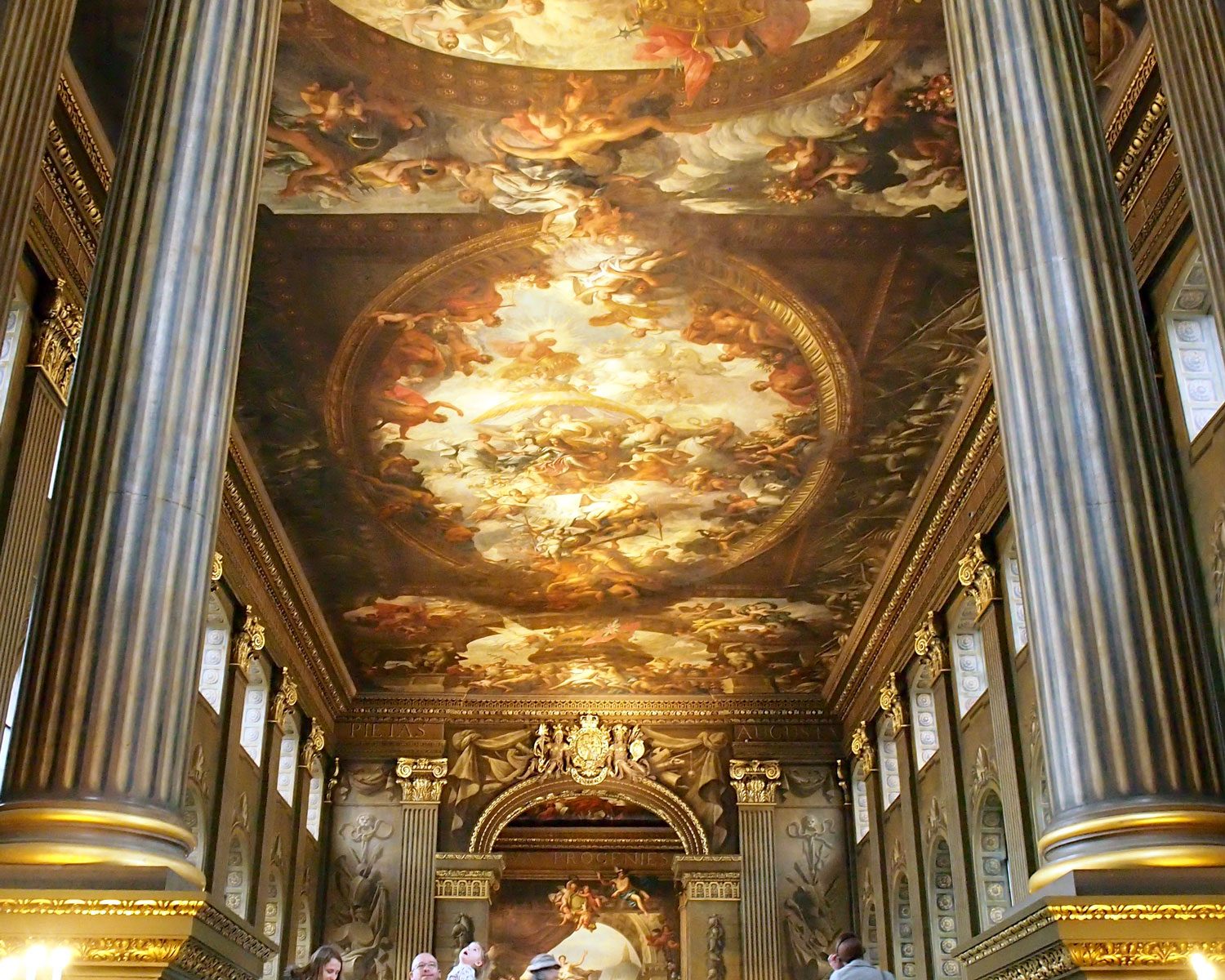
Looking back through our photographic files, I can see that it’s eleven years since we last had a team outing to see the Painted Hall. On a summer’s evening we took a guided tour through the Old Royal Naval College, including the Painted Hall and the undercroft which was then only accessible on such tours. Back then, the Old Royal Naval College was finding its feet as a visitor attraction, having fairly recently been handed over from ownership and regular use by officers of the Royal Navy.
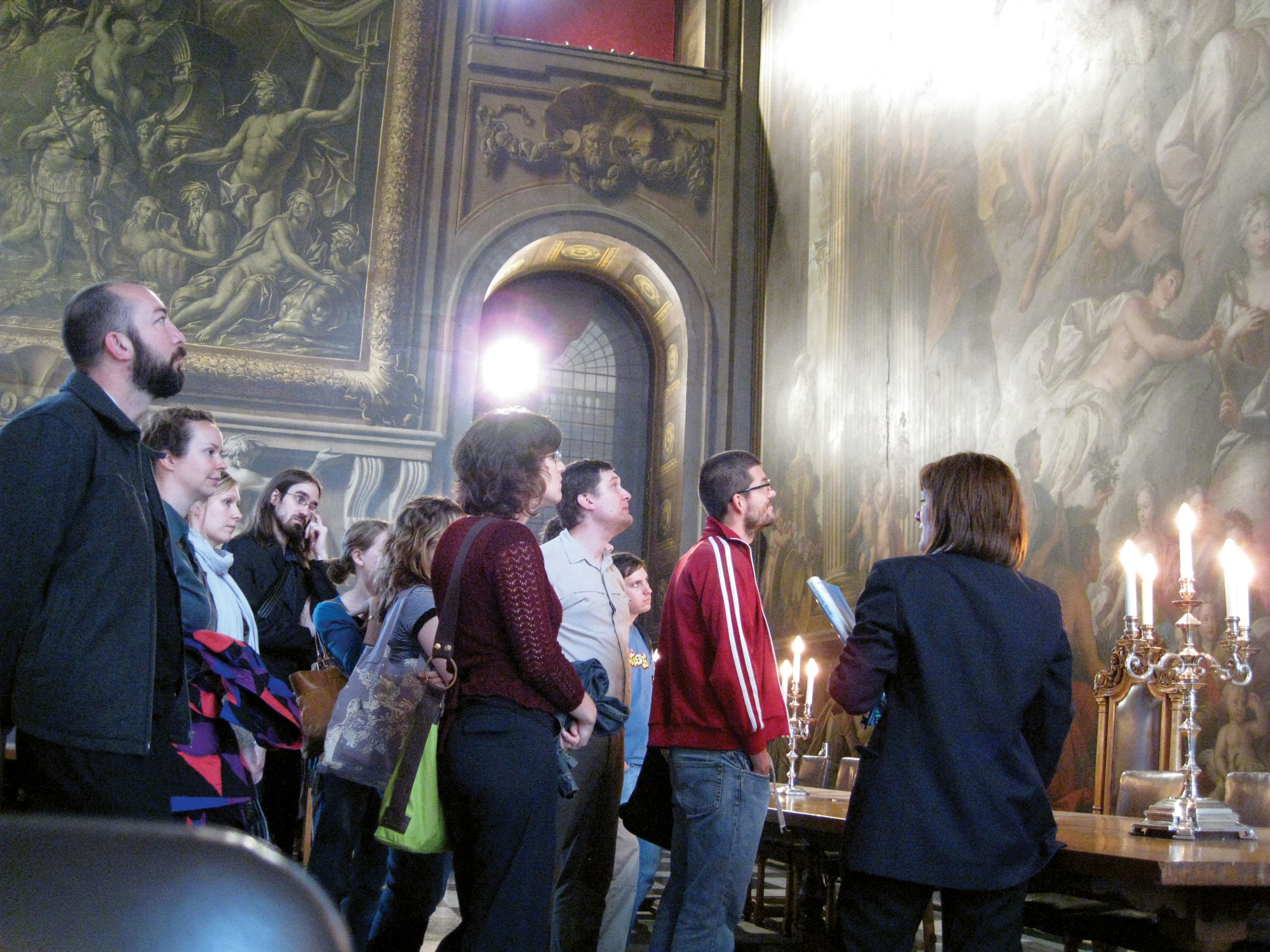
The Cog team, viewing the painted wall of the Upper Hall, on a guided tour in 2008.
Our 2019 trip was a very different occasion.
Having been closed for more than two years, for an £8.5 million restoration, the painted hall is rightfully being hailed as one of the must-see attractions of any London visit. It’s a draw that will attract huge numbers to visit the magnificent Christopher Wren buildings.

The Cog team, arriving through the gate.
We walked through the main gate, through the Naval College grounds and entered via the undercroft, which has been opened up by architects and conservation partners, Hugh Broughton Architects.
Picking up our digital guides (audio, video and a bit of augmented reality) we climbed the stone staircase and into the Lower Hall. From a conservation perspective the new entrance allows the Hall to be better sealed from the elements. But the change doesn’t detract from the full length views of the Hall that used to be seen through the main entrance from the courtyard (as shown at the top of this page).
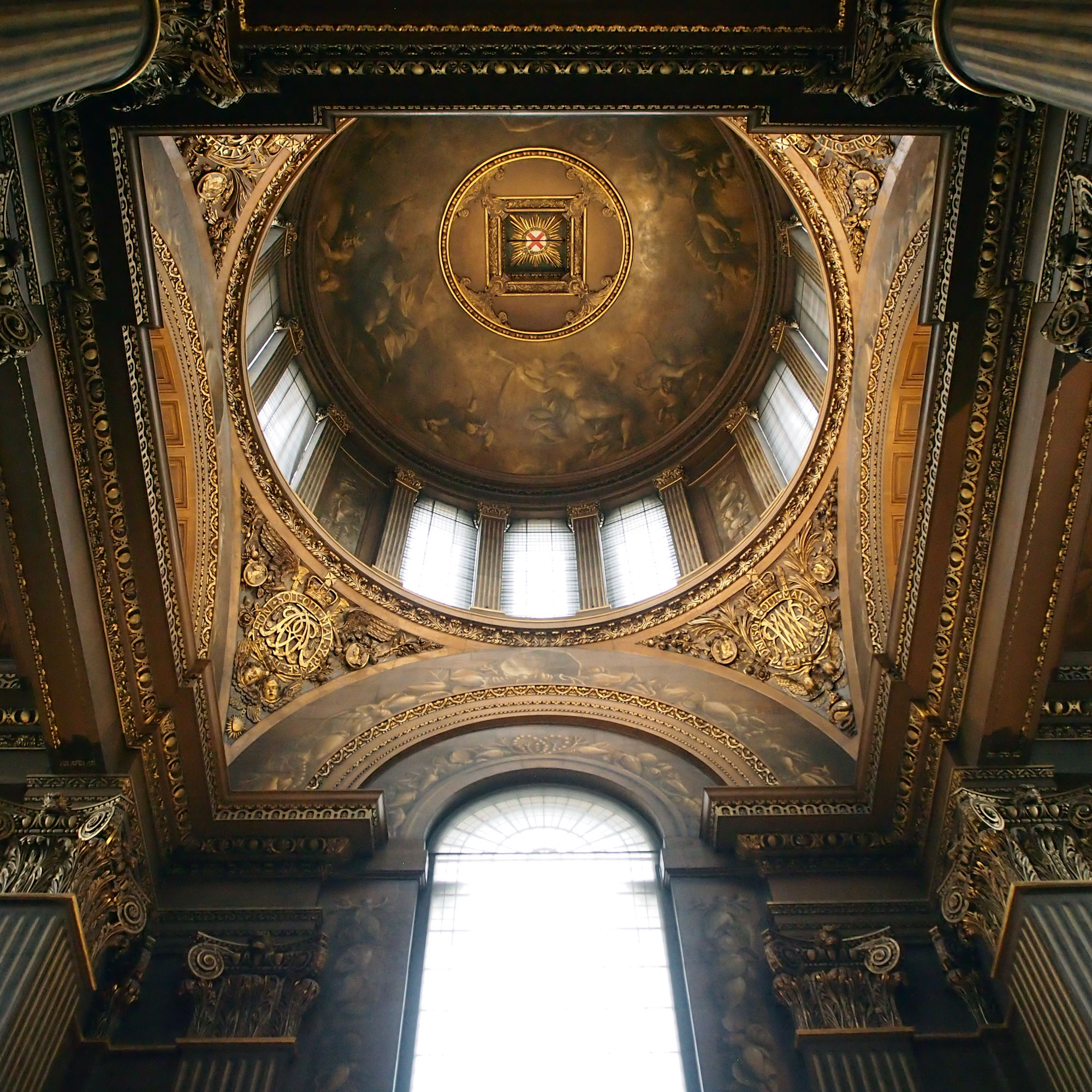
Christopher Wren’s dome, viewed from below, in the entrance to the Painted Hall.
The first thing I noticed was how much less light was allowed to stream in through the windows (now blinded and regulated) but how cleverly LEDs were used to give a consistent brightness throughout.

The windows, covered in light-regulating materials.
Beyond the sheer scale and proportions of Christoper Wren’s architecture, the Hall is remarkable because of the painted interior. In 1707, the relatively young artist, James Thornhill was commissioned to bring the space to life. Twenty years later, the work was complete.

Nicholas Hawksmoor arch with gilded signs of the zodiac.
So magnificent is the painting that an arch with the Royal Arms and gilded signs of the zodiac, designed by Nicholas Hawksmoor, is a mere footnote to the tour.
Every surface is painted. Smooth columns are given a fluted appearance, what look like carvings turn out to be painted figures, and much of the coving and depth is achieved through a trick of perspective.

The allegorical ceiling in the Lower Hall, with William and Mary at its centre.
But its the huge set-piece ceilings and end wall that are the magnificent focus of attention.
At the centre of the ‘main’ Lower Hall ceiling we find William and Mary, William like a triumphal arc-angel, suppressing a devilish figure under foot, that figure being Louis XIV of France.
Perhaps what makes the painting even more interesting is that it represents such a turbulent time in British and especially Royal history. This was just six decades after civil war had seen the beheading of Charles I. Restoration followed and then the uniting of England, Scotland and Ireland under James I. But James was Catholic and the Protestant noblemen of England arranged his overthrow by Wilhelm of Holland in what was known as the Glorious Revolution. That is the William we see, crushing the Catholic King of France.
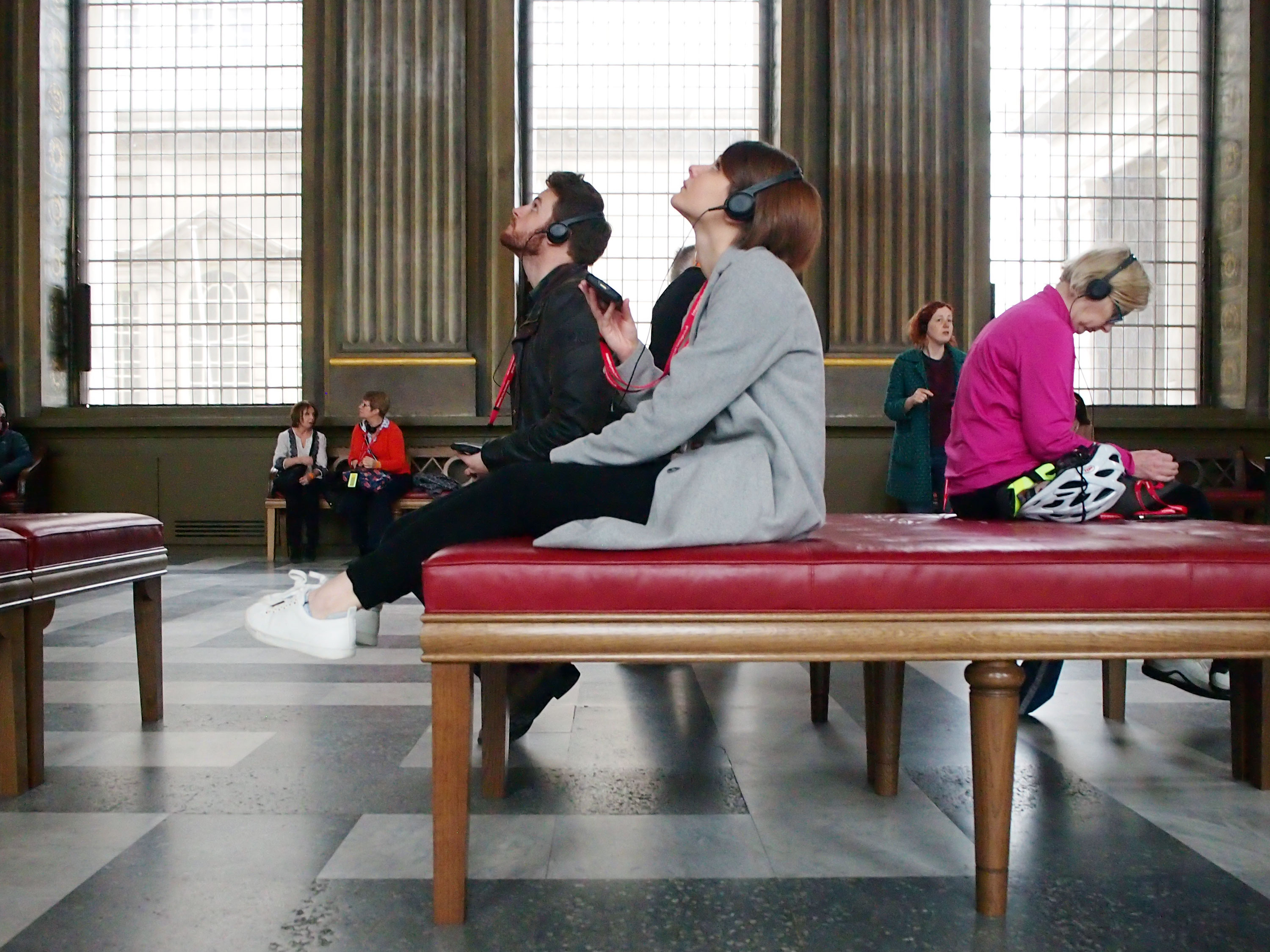
Alex and Emily, gazing at the ceiling from the red leather seats.
The centre of the room is filled with red leather banquettes, where visitors can sit (or lie) and look up at the ceiling, as apparently Nelson would have done in his time.
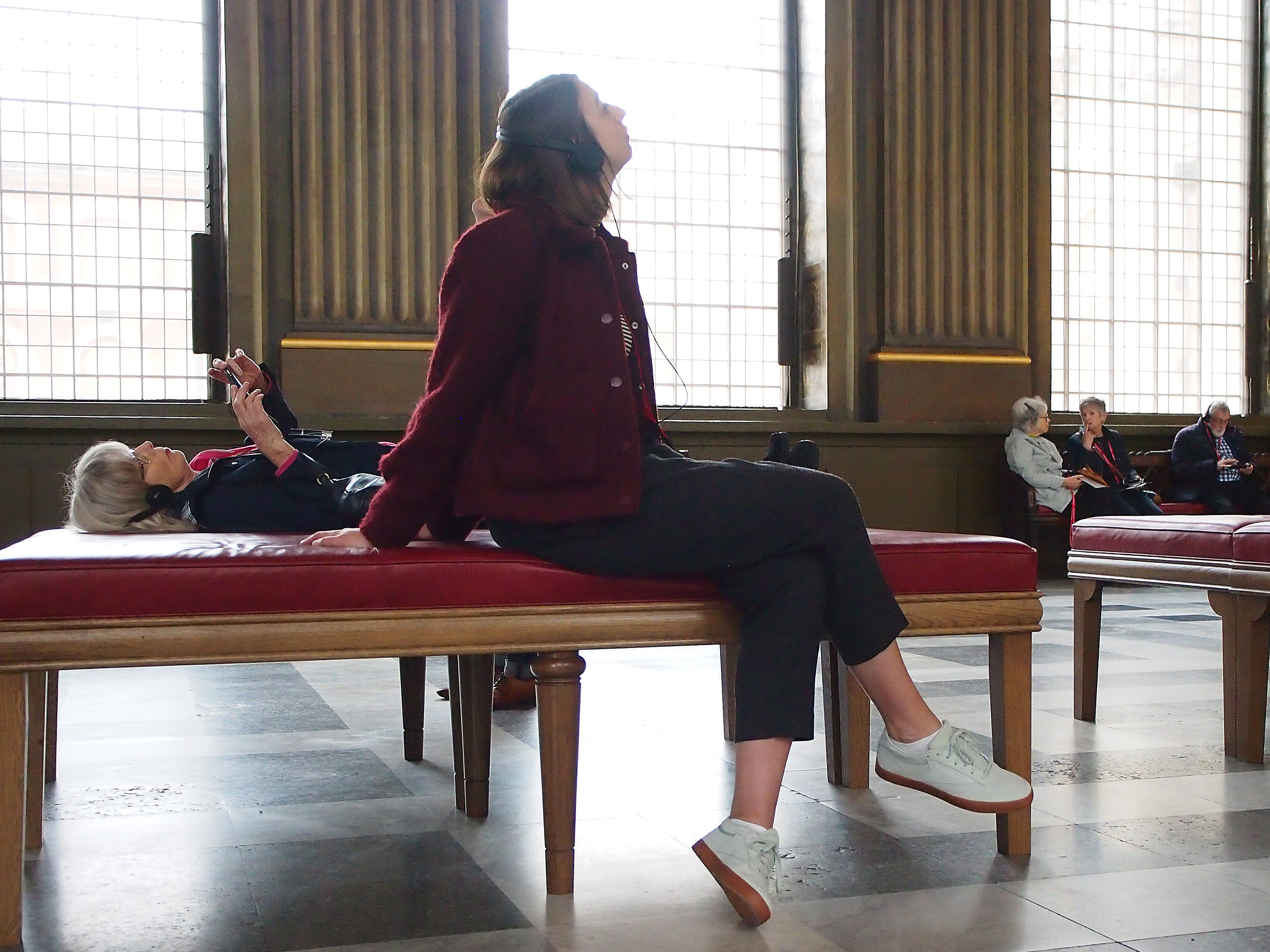
Anna, gazing at the ceiling.
But by the time Thornhill was painting, William was dead, succeeded by James’s daughter Anne. Queen Anne, played by Olivia Colman in the film, The Favourite, died during the commission and is relegated to a small framed portrait in the Lower Gallery.

Hanoverian King George I with his family, surrounded by metaphor.
On the far wall of the Upper Gallery (the prime position when looking down the Painted Hall from the entrance) we find a life-size work featuring George I who was monarch in the latter half of the work. Interestingly, the Hanoverian, George was 52nd in line to the throne but all of those before him were Catholics and therefore barred from accession.
In the background, through the arch, there’s a nice nod to the architect of this building, the dome of St Paul’s Cathedral (Thornhill was also commissioned to paint the interior of the dome, halfway through the Greenwich commission, as well as the walls of Blenheim Palace, the seat of the Duke of Marlborough).
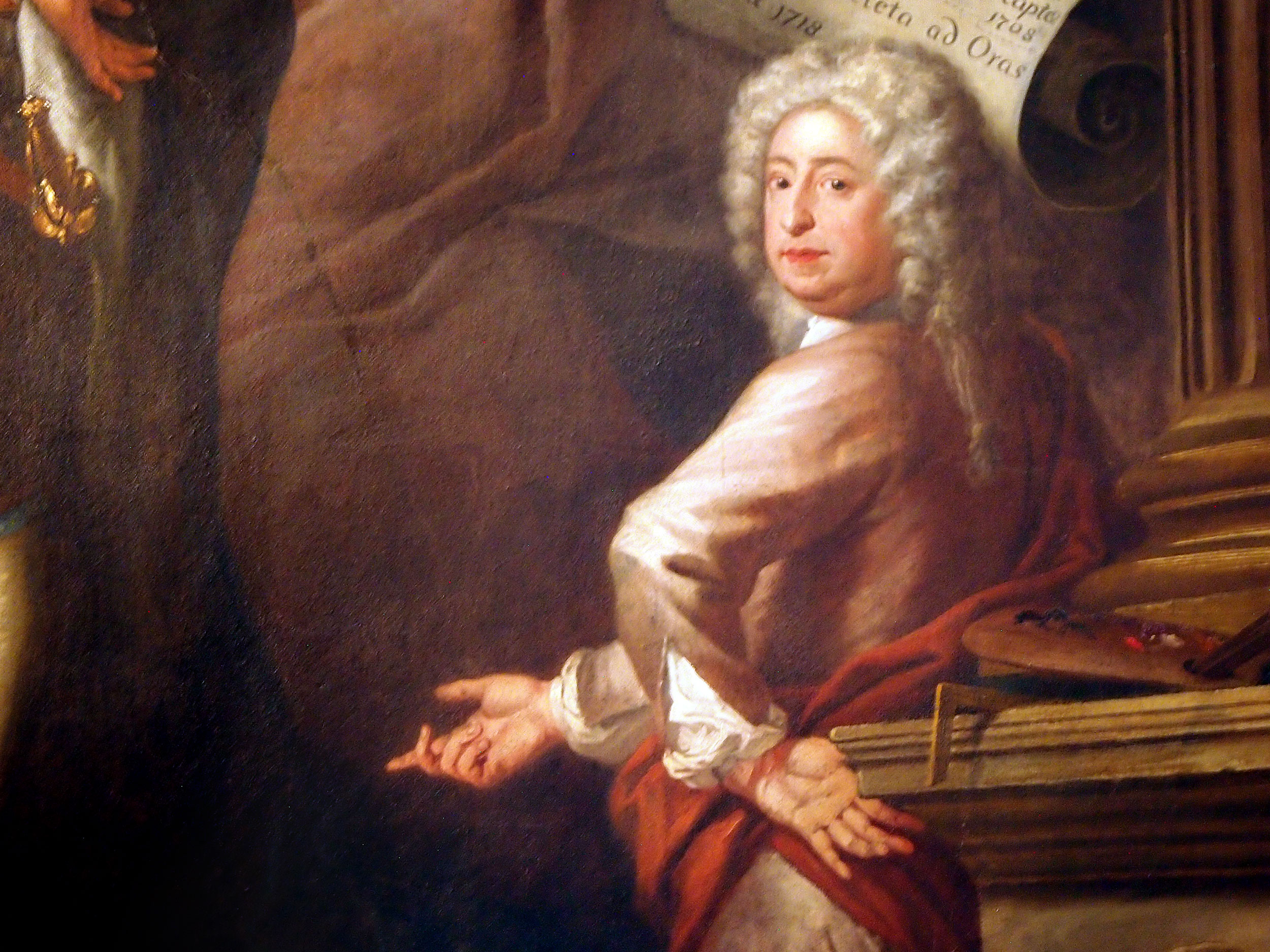
James Thornhill’s self portrait, looking into his painting of George I.
It is in the corner of this wall that Thornhill places himself, leaning against the painting of a pillar, his palette and set-square behind him.
By the time the painting was completed, George was on his deathbed, and the Hall was considered too grand for its intended purpose as a dining hall for Naval pensioners. Instead it was kept largely empty, with the pensioners eating in the undercroft. Fittingly, the Undercroft is now the site of a new cafe/restaurant.
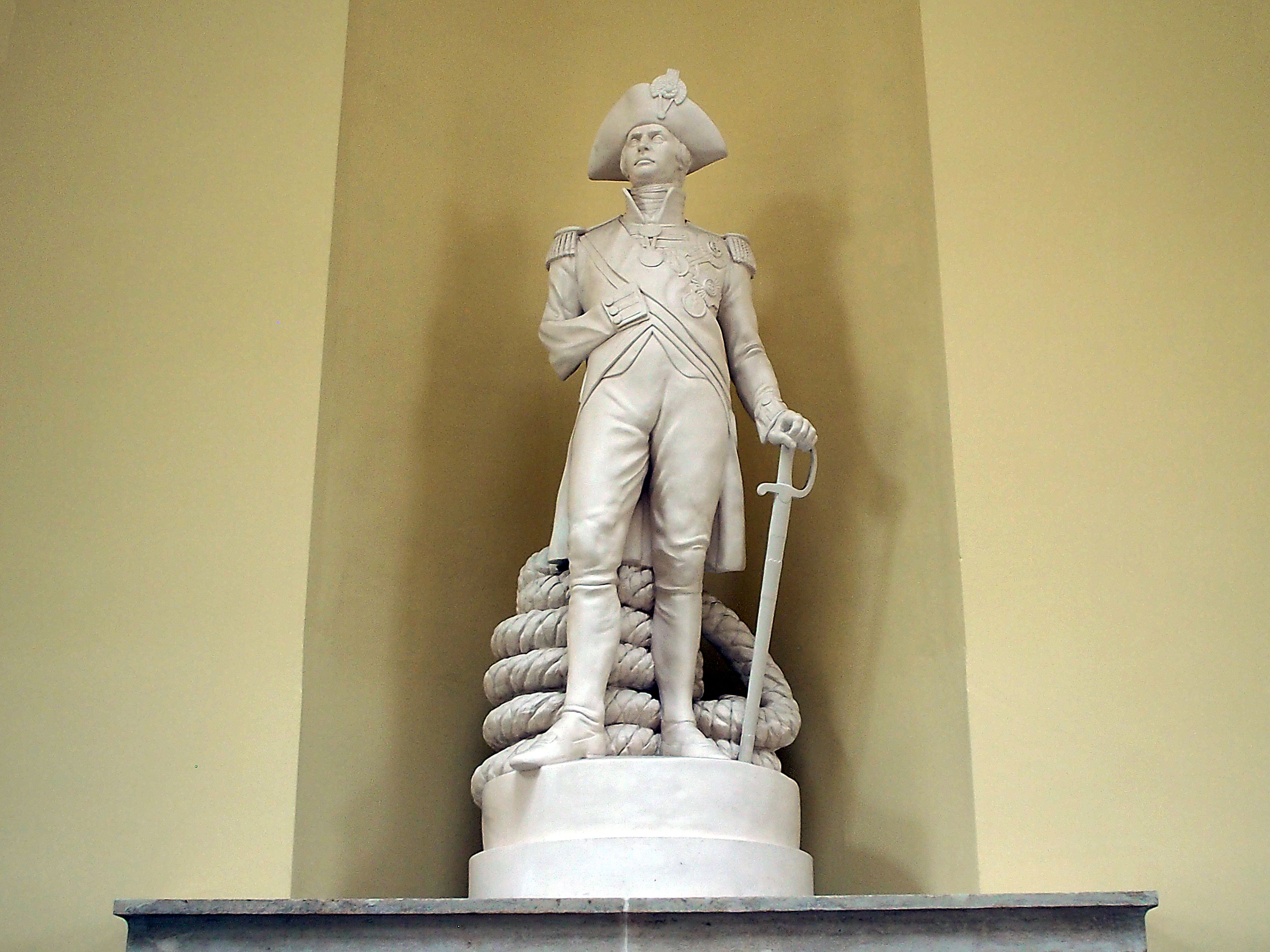
A statue of Nelson, in a small room off the Upper Hall.
Perhaps the most famous use of the Hall (apart from the scene of the Jack Sparrow’s arrest in Pirates of the Caribbean: On Stranger Tides) was the laying in state of Admiral Nelson. His body laid in the Upper Hall for three days in January 1806, and 30,000 people queued to pay their respects (and be seen to be weeping and wailing) as the passed his pickled body. There’s a carved stone there now to commemorate the spot.
The Hall was also the 19th Century home of 100 paintings which served as the National Gallery of Naval Art, although I can’t imagine where they were hung amongst the large windows, presumably in front of the painted walls. In 1936, the paintings were moved to the newly founded National Maritime Museum and the Hall was finally put to use as a dining hall for naval officers, until they left in 1998.
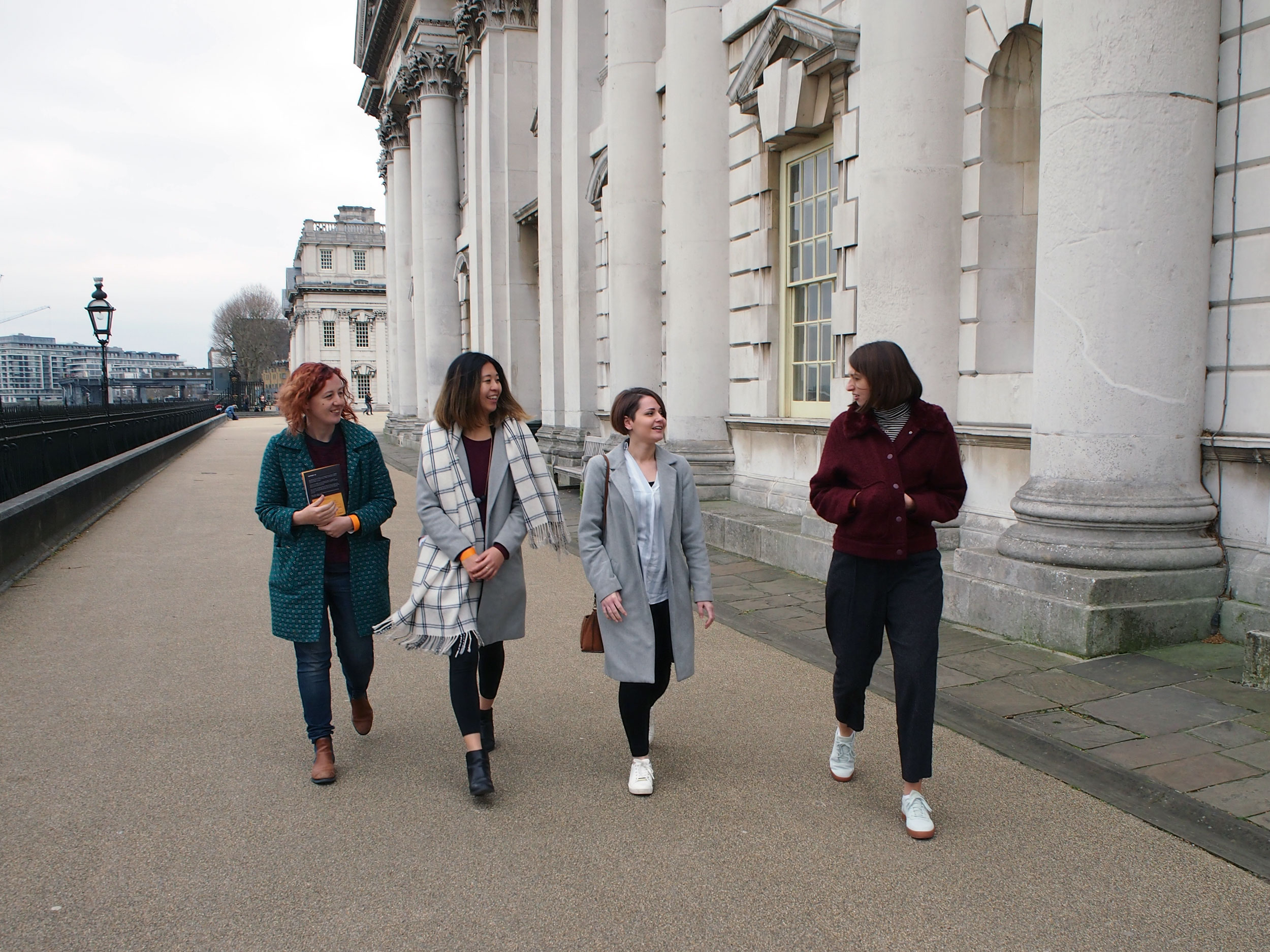
Some of the Cog team, making their way back to the studio, via the riverside walk.
We had a great time. It’s well worth a trip as part of a wonderful day out in Greenwich. And we’re only a 5 minute walk away so you could pop in and see us on the same day.
___
Painted Hall:
Open 10am-5pm, seven days a week.
Tickets are £12 (concessions £8.50), free for under 16s
A ticket gives you re-entry for a year.
Or ‘pay as you wish’ on the first Wednesday of every month.


